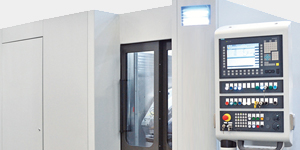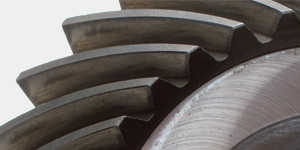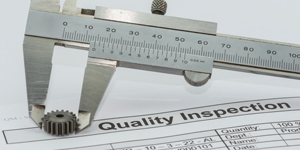Stress relief is a key step in parts manufacturing
In this column, we will discuss the process of stress relief and compare it to the effects of annealing.
During the manufacturing process, residual...
Comparison of carburizing methods
In this column, we will discuss the different methods of carburizing, with a focus on resultant metallurgy.
Introduction
Carburizing is the addition of carbon to the...
Application of cryogenics to improve steel properties
In this column, we will discuss the application of cryogenically treating gears and the outcomes expected.
Introduction
There has been much discussion regarding the application of...
Measuring retained austenite
In this column, we will discuss the different methods of measuring the amount of retained austenite in a heat-treated steel sample.
Retained Austenite
Previously we...
Viscosity and the viscosity index
In this column, we will discuss the viscosity and viscosity index.
Viscosity and the viscosity index are terms that are applied not only to...
A guide to creating a cleaning and washer control plan
In this column, I will discuss the control plan for a generic washer used for cleaning heat-treated parts.
Proper cleaning involves not only removing the...
Control plan for oil-based quenchants
In this column, I will propose a simple control plan for oil-based quenchants and corrective actions.
Oil quenchants have been used extensively to harden steel...
Selecting a cleaner for prewashing prior to heat treatment
In this column, we will discuss the selection of a cleaner for prewashing prior to carburizing. The choice is critical to avoid forming a...
Control plans for polymer quenchants
Polymer quenchants, whether used for immersion quenching or spray applications such as induction hardening, are much more difficult to control than oil quenchants. As...
Quench system design – heating and cooling
In this month’s column, we will discuss the heating and cooling of a quench tank.
All quenching fluids have an optimum operating temperature range requiring...
Different methods of aqueous polymer concentration control
In this article, I will discuss the two different methods for controlling the concentration of polymer quenchants. This is applicable to either induction spray...
Transformation of retained austenite
In this month’s column, I will discuss the transformation of retained austenite, and its stabilization.
In the last column, I reviewed the dimensional changes that...
Dimensional changes during tempering
In this column, I will discuss the dimensional changes that occur during tempering, with a short discussion of the underlying physical metallurgical changes.
Introduction
After quenching,...
Precipitation hardening stainless steels
In this column, we will discuss precipitation hardening steels and their physical metallurgy.
Precipitation hardened stainless steels are a class of stainless steels that can...
Calibration of refractometers for control of polymer quenchants
In the last column, we described the use of refractometers for controlling the concentration of many different types of fluids, including polymer quenchants and...
Application of optical refractometers for the control of concentration
Optical refractometers, analog and digital, are widely used in industrial practice to measure the concentration of coolants, polymer quenchants, and fire-resistant hydraulic fluids, and...
Determining carbon potential for neutral hardening or carburizing
To successfully heat-treat or carburize the many different alloys seen in the heat-treating shop, it is necessary to properly control the carbon potential of...
Nondestructive testing VI – Radiography
In this article, we will be discussing the use of radiography (X-rays) for the detection of flaws. In the previous articles on nondestructive testing...
Nondestructive testing Part V: Eddy current testing
In the previous column, I discussed ultrasonic testing of materials. In this column, I will be discussing Eddy Current NDT methods.
History
Eddy current testing is...
Non-destructive testing Part IV: Ultrasonic testing
In my previous articles, I have discussed dye penetrant inspection and magnetic particle inspection. In this article, I will give a brief overview of...


















